

Clearly: inflatables are not allowed.

Private Inflatables on the Ottawa River: is this good or bad
Get involved in access issues by networking with other interested and effectives parties.
Question: is there a need to continue to work with Ottawa River rafting companies to secure access for private inflatables? Controlled access and egress seems to limit competition.
OWL provides private kayak access to the river at McKoys. This is an invaluable kayaker resource that should be preserved and protected.
Wilderness Tours has recently hosted the World Freestyle championships and provides kayak take out at "Black's" another invaluable resource. Thanks to farmer Black and Joe Kowalski.
On the other hand, private inflatables (Shredders, duckies Etc.) are not currently allowed at kayak/C1 access in favour of the LaPasse put-in
and take out on some public access above Portage.
Private companies have the right to decide who uses their property and facilities, including deciding how cars are parked on their
access roads and what kind of craft is going in and out.
Some may see the limiting of private inflatables use of the river by controlling access as a very serious access issue other may care less.
Private rafters are legitimate river users and that may consider a ban on private rafts as unreasonable restriction flying in the face of access responsibilities of commercial riverside landowners : which at present are moral and ethical rather than legal or practical.
But the whitewater section of the Ottawa river is not a park. Its banks are under municipal and or private jurisdiction and organization. There is no responsibility to provide access for all.
True public access to the Ottawa river would have to be provided by a level of government acting in the public interest. Until that step is taken controlled access and egress and the threat of blocked access will
allow operators to pick and choose who can run a river that is being and essential create a situation where the river itself has become a privately owned resource.
Whitewater Ontario is very interested in all aspects of river development which may impinge upon the traditional rights of whitewater recreational and commercial paddlers. We wish to establish a dialogue with key Ministry (MNR) Contacts and take steps to ensure that Whitewater Ontario and/or its affiliates will be considered as potential intervenors, committee members and stakeholders of record for the development of new water management plans in the province. As whitewater paddlers, our interests often overlap with the interests of hydro-power development. But we understand that is the reality of resource use today, and that the best development is a development that takes into consideration all of the values of a resource. Whitewater Ontario would like to be directly notified, via email dispatches, of pending river development projects that may impinge upon traditional whitewater paddling activities including bridges, or dams, which may curtail traditional navigation as described under the Navigable Waters Protection Act and any shoreside development which may curtail traditional access and portage rights. To this end, Whitewater Ontario is working to beome a stakeholder of record on all new site applications. We believe the number of new site projects that paddlers will have concerns about will be small but we will be able to provide assistance in the public consultation, environmental assessment and impact assessment phases.
Outside of Ontario we are dismayed by the case the of a Quebec river, the Kipawa, which is currently being argued in federal court, where a dam owner completely ignored the navigation rights of paddlers in contravention of the Navigable Waters Protection Act.
Your assistance would be appreciated in achieving these objectives by becoming more involved with Whitewater Ontario as an active member, working on committees, projects, or as a member of the executive decision making group.
For ongoing information be sure to contact our office administrator, Donna Boadway, or me as the president of Whitewater Ontario. I have a personal blog, whitewaterontario.blogspot.com and there is the official site of Whitewater Ontario: www.whitewaterontario.ca
Thanks again for becoming a member
_________________
Working hard to safeguard paddling assets for all Canadians
Pete


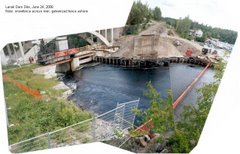

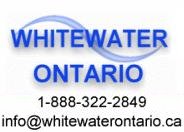
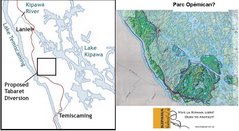

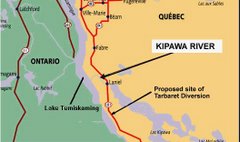

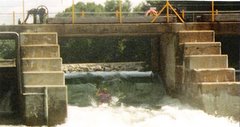





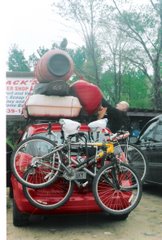

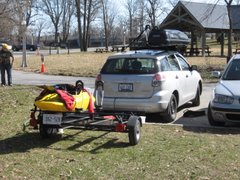

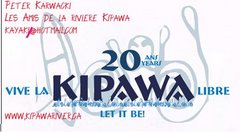
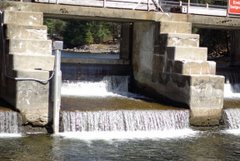


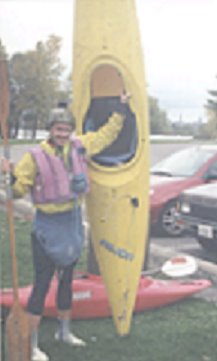



1 comment:
Private Inflatables on the Ottawa River: is this good or bad
Get involved in access issues by networking with other interested and effectives parties.
Question: is there a need to continue to work with Ottawa River rafting companies to secure access for private inflatables? Controlled access and egress seems to limit competition.
OWL provides private kayak access to the river at McKoys. This is an invaluable kayaker resource that should be preserved and protected.
Wilderness Tours has recently hosted the World Freestyle championships and provides kayak take out at "Black's" another invaluable resource. Thanks to farmer Black and Joe Kowalski.
On the other hand, private inflatables (Shredders, duckies Etc.) are not currently allowed at kayak/C1 access in favour of the LaPasse put-in
and take out on some public access above Portage.
Private companies have the right to decide who uses their property and facilities, including deciding how cars are parked on their
access roads and what kind of craft is going in and out.
Some may see the limiting of private inflatables use of the river by controlling access as a very serious access issue other may care less.
Private rafters are legitimate river users and that may consider a ban on private rafts as unreasonable restriction flying in the face of access responsibilities of commercial riverside landowners : which at present are moral and ethical rather than legal or practical.
But the whitewater section of the Ottawa river is not a park. Its banks are under municipal and or private jurisdiction and organization. There is no responsibility to provide access for all.
True public access to the Ottawa river would have to be provided by a level of government acting in the public interest. Until that step is taken controlled access and egress and the threat of blocked access will
allow operators to pick and choose who can run a river that is being and essential create a situation where the river itself has become a privately owned resource.
Whitewater Ontario is very interested in all aspects of river development which may impinge upon the traditional rights of whitewater recreational and commercial paddlers. We wish to establish a dialogue with key Ministry (MNR) Contacts and take steps to ensure that Whitewater Ontario and/or its affiliates will be considered as potential intervenors, committee members and stakeholders of record for the development of new water management plans in the province. As whitewater paddlers, our interests often overlap with the interests of hydro-power development. But we understand that is the reality of resource use today, and that the best development is a development that takes into consideration all of the values of a resource. Whitewater Ontario would like to be directly notified, via email dispatches, of pending river development projects that may impinge upon traditional whitewater paddling activities including bridges, or dams, which may curtail traditional navigation as described under the Navigable Waters Protection Act and any shoreside development which may curtail traditional access and portage rights. To this end, Whitewater Ontario is working to beome a stakeholder of record on all new site applications. We believe the number of new site projects that paddlers will have concerns about will be small but we will be able to provide assistance in the public consultation, environmental assessment and impact assessment phases.
Outside of Ontario we are dismayed by the case the of a Quebec river, the Kipawa, which is currently being argued in federal court, where a dam owner completely ignored the navigation rights of paddlers in contravention of the Navigable Waters Protection Act.
Your assistance would be appreciated in achieving these objectives by becoming more involved with Whitewater Ontario as an active member, working on committees, projects, or as a member of the executive decision making group.
For ongoing information be sure to contact our office administrator, Donna Boadway, or me as the president of Whitewater Ontario. I have a personal blog, whitewaterontario.blogspot.com and there is the official site of Whitewater Ontario: www.whitewaterontario.ca
Thanks again for becoming a member
_________________
Working hard to safeguard paddling assets for all Canadians
Pete
Post a Comment